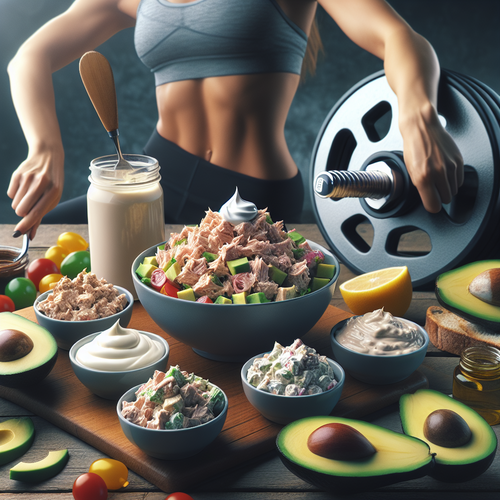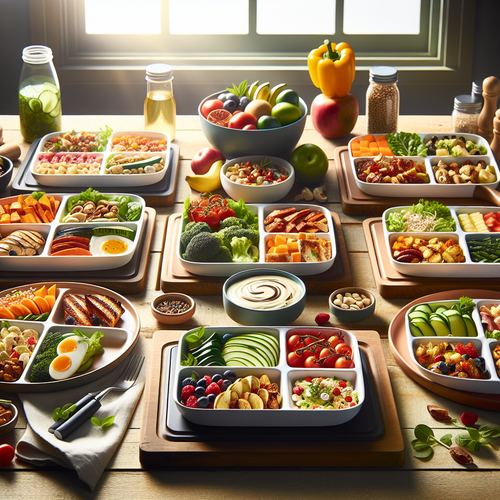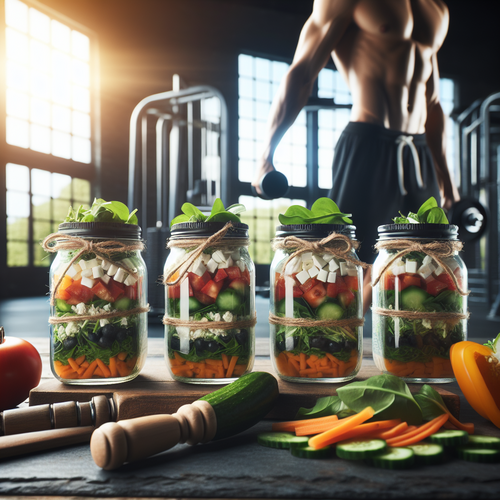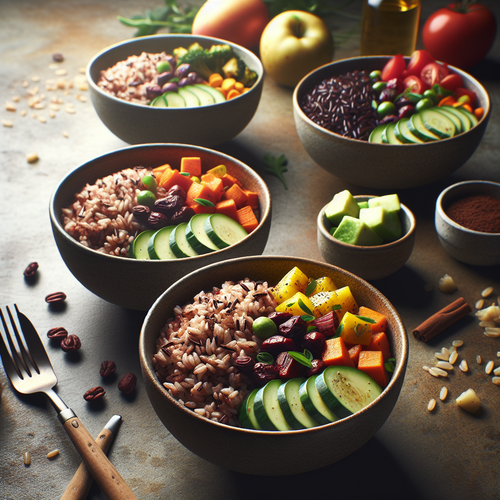5 Tuna Salad Variations (Low Mayo)
Key Takeaways
- Low mayo tuna salad recipes are healthier, lighter, and still full of flavor.
- Smart swaps like Greek yogurt and avocado boost nutrition and reduce saturated fat.
- Tuna delivers high-quality protein for muscle building and weight management.
- Each variation is quick to prepare, perfect for busy lifestyles.
- Enjoy heart-healthy fats, fiber, and vitamins with every meal!
Table of Contents
- Benefits of Healthy Tuna Salad Variations
- 5 Tuna Salad Variations (Low Mayo): Step-by-Step Recipes
- Tips for Preparing Tuna Salad at Home
- Why These Recipes Work: The Science Behind Healthy, Low-Mayo Tuna Salads
- FAQ
Benefits of Healthy Tuna Salad Variations
Whether you’re focused on clean eating or just looking for a new lunch staple, healthy tuna salad variations deliver on all levels:
- High in Protein: Tuna keeps you full and supports muscle repair. (See our smoothie guide!)
- Omega‑3s: Boost heart and brain health, reduce inflammation.
- Vitamins & Minerals: Tuna offers B vitamins, selenium, potassium, and magnesium for lasting energy.
Instead of drowning your tuna in mayo, try wholesome options:
- Avocado for fiber and heart-healthy fat
- Greek yogurt for calcium, protein, and probiotics
Healthy swaps mean fewer calories with more nutrients. Learn more about healthy fats and how they lower heart disease risk!
5 Tuna Salad Variations (Low Mayo): Step-by-Step Recipes
1. Tuna Salad without Mayo
Who needs mayo when you have lemon, herbs, and crunchy veggies? This mayonnaise-free tuna salad is crisp, fresh, and bursting with Mediterranean flair.
- 1 can tuna in water, drained
- 1 tbsp lemon juice
- 1 celery stalk, diced
- 2 tbsp red onion, finely diced
- 2 tbsp chopped parsley or dill
- Salt & pepper (to taste)
- Optional: 1 tsp capers, ½ tsp Dijon mustard
- Combine all veggies, herbs, and tuna in a bowl.
- Add lemon juice (and capers/mustard if you wish).
- Mix gently, season with salt and pepper.
- Spoon onto whole grain toast, leafy greens, or lettuce cups. (More ideas? Try these anti-inflammatory recipes!)
Keywords: Light tuna salad, lemon tuna salad, no-mayo recipe
2. Healthy Tuna Salad
Go Mediterranean with crisp cucumbers, arugula, olive oil, and basil. The olive oil boosts healthy fat while fresh veggies add color and crunch.
- 1 can tuna (drained)
- ½ cucumber, diced
- 5 cherry tomatoes, chopped
- Arugula (handful)
- 2 tsp olive oil + 1 tbsp balsamic vinegar
- 1 tbsp chopped basil
- Salt & pepper
- Toss everything together in a big bowl.
- Serve chilled. For more veggie-rich meals, don’t miss our Mediterranean recipe guide.
Reference: EatingWell – Healthy Tuna Salad
3. Low Fat Tuna Salad Recipe
Skip the fat, keep the flavor. Greek yogurt, vinegar, and mustard are the stars:
- 1 can tuna, drained
- 2 tbsp low-fat Greek yogurt
- 1 tsp apple cider vinegar
- 1 tsp Dijon mustard
- 2 tbsp diced celery
- 1 tbsp chopped scallion or chives
- Salt & pepper
- Mix yogurt, vinegar, and mustard in a bowl.
- Add tuna, celery, scallion. Combine well.
- Season and serve in sandwiches or on salad greens. See more low carb lunch options.
Reference: BBC Good Food
4. Easy Tuna Salad with Greek Yogurt
Craving creaminess? Greek yogurt does it with extra protein and probiotics. Mix in bell pepper, dill, and lemon for a fresh finish.
- 1 can tuna, drained
- ¼ cup Greek yogurt
- 1 tbsp lemon juice & ½ tsp zest
- 2 tbsp diced red bell pepper
- 1 tsp chopped dill
- Salt & pepper
- Whisk yogurt, juice, and zest.
- Fold in tuna, bell pepper, dill. Season.
- Enjoy chilled (see more protein options)
Reference: Cleveland Clinic
5. Tuna Salad with Avocado Recipes
Want rich, creamy texture? Avocado does it naturally, with zero mayo. The ultimate heart-healthy choice.
- 1 ripe avocado
- 1 can tuna, drained
- 5 cherry tomatoes, chopped
- ¼ red bell pepper, diced
- Juice of ½ lime
- 1 tbsp chopped cilantro
- Salt & pepper
- Mash avocado with lime juice until creamy.
- Stir in tuna, veggies, cilantro.
- Season and spoon onto lettuce or enjoy with crackers. Pair with these low calorie dinners.
Reference: Harvard Health Blog
Tips for Preparing Tuna Salad at Home
- Choose Quality Tuna: Wild-caught or “no salt added” varieties are healthiest. (Find out why)
- Batch Prep: Make a large bowl to keep in the fridge for 2–3 days.
- Mix Fresh for Crunch: Keep veg and dressing separate until serving, if possible.
- Chill Safely: Store at ≤ 40°F (4°C), never leave out for long. (More storage guidance)
- Custom Veggies: Add shredded carrots or spinach for extra fiber and nutrients.
- Gluten-Free? Swap bread for lettuce cups or whole grain crackers.
Why These Recipes Work: The Science Behind Healthy, Low-Mayo Tuna Salads
Each ingredient in these tuna salad variations is backed by nutritional science:
- Tuna: High-quality protein and omega-3s for heart and muscle health (Harvard Health).
- Avocado: Delivers healthy monounsaturated fat and fiber (Learn more).
- Greek Yogurt: More protein and less fat than mayo (Cleveland Clinic).
- Veggies: Low-calorie, high-fiber, packed with vitamins and antioxidants.
- Olive Oil: Reduces inflammation, supports the heart (Mayo Clinic).
Protein-rich meals like these support fullness and muscle maintenance. For science-backed insights, check PubMed’s review of high-protein diets for weight management.
“Simple swaps like Greek yogurt or avocado let you enjoy classic taste while improving your health in every bite.”
FAQ
-
Can I use canned tuna in oil instead of water?Yes, but drain it well to reduce excess calories and fat. Tuna in water is typically leaner and lighter—perfect for these healthy recipes.
-
How long does homemade tuna salad keep?Store in an airtight container in the fridge for up to 3 days for best flavor and food safety.
-
Are these recipes gluten-free?Yes, if you serve the tuna salad on lettuce, salad greens, or gluten-free bread/crackers. Always check packaging on canned tuna and yogurt to be sure.
-
What can I add for extra crunch or flavor?Try pumpkin seeds, sunflower seeds, diced pickles, or chopped apple for contrast and nutrition.
-
Are these tuna salads good for meal prep?Absolutely—they can be prepped ahead and hold up well. Store greens and dressing separately for best results.








